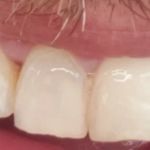What Is Plaque and How to Remove It: A Guide to Oral Health
- What is Plaque?
- How Plaque Forms on Your Teeth
- Why Plaque is Harmful for Your Teeth and Gums
- How to Remove Plaque from Your Teeth
- Preventing Plaque Build-up for Healthy Teeth
- Dentistry Toothtruth: Products to Keep Your Teeth Plaque-Free
1. What is Plaque?
Plaque is a sticky, colorless film of bacteria that forms on your teeth. It develops as a result of food particles, sugar, and bacteria that naturally reside in your mouth. Over time, plaque can harden and turn into tartar, a more stubborn substance that can only be removed by a dentist or hygienist.
Plaque isn’t just a cosmetic issue; it’s a serious factor in the development of tooth decay and gum disease. Regular cleaning and good oral hygiene are essential to keep plaque under control and prevent it from causing damage to your teeth and gums.
2. How Plaque Forms on Your Teeth
Plaque forms naturally in the mouth as a result of the bacteria that live there. Every time you eat or drink, food particles and sugar mix with the bacteria in your mouth, creating a sticky biofilm on your teeth. This process can start happening within hours of brushing your teeth.
The bacteria in plaque feed on sugar and carbohydrates, producing acid as a byproduct. This acid can erode tooth enamel, leading to cavities. Plaque also irritates your gums, which can lead to gum disease if left untreated.
3. Why Plaque is Harmful for Your Teeth and Gums
Plaque isn’t just a nuisance—it can cause serious damage to your teeth and gums. If plaque is not removed regularly, it can harden and turn into tartar, which can only be removed by a professional cleaning. Tartar buildup can lead to cavities, gum disease (gingivitis), and even tooth loss if left untreated.
When plaque accumulates on the teeth, it creates an environment where bacteria can thrive. The acid produced by these bacteria erodes tooth enamel, which can eventually lead to cavities. Additionally, plaque buildup on the gums can lead to inflammation, bleeding, and gum disease, which can be painful and difficult to treat without professional help.
4. How to Remove Plaque from Your Teeth
Removing plaque from your teeth requires consistent and proper oral hygiene practices. Here are some effective ways to remove plaque:
4.1. Brushing Your Teeth Properly
The most effective way to remove plaque is by brushing your teeth at least twice a day. Use a soft-bristled toothbrush and fluoride toothpaste. Make sure to brush for at least two minutes, reaching all surfaces of your teeth, including the backs and the chewing surfaces.
4.2. Using Dental Floss
Flossing is crucial for removing plaque from between your teeth where your toothbrush can’t reach. Use floss to clean between each tooth, gently moving up and down to remove plaque and food particles.
4.3. Using Mouthwash
An antibacterial mouthwash can help kill bacteria that cause plaque. It also helps to freshen your breath and promote overall oral health. Make sure to choose a mouthwash that targets plaque and provides long-lasting protection.
4.4. Professional Cleaning
Even with regular brushing and flossing, plaque can build up in areas that are hard to reach. A professional dental cleaning by a hygienist is essential to remove tartar and plaque buildup. Regular cleanings every 6 months are recommended for optimal oral health.
5. Preventing Plaque Build-up for Healthy Teeth
Preventing plaque buildup is just as important as removing it. Here are some strategies to keep your teeth plaque-free:
5.1. Maintain a Healthy Diet
Eating a balanced diet rich in fruits, vegetables, and whole grains can help reduce plaque buildup. Limiting sugary snacks and drinks will prevent the bacteria in your mouth from feeding on sugars, thus reducing plaque formation.
5.2. Drink Plenty of Water
Drinking water throughout the day helps wash away food particles and bacteria that can lead to plaque formation. Water also helps maintain saliva production, which naturally neutralizes acids in your mouth and protects your teeth.
5.3. Quit Smoking
Smoking contributes to plaque buildup and increases your risk of gum disease and tooth decay. Quitting smoking is one of the best things you can do for your oral health.
6. Dentistry Toothtruth: Products to Keep Your Teeth Plaque-Free
If you're looking for effective products to help remove plaque and maintain healthy teeth, check out Dentistry Toothtruth. We offer premium toothbrushes, dental floss, mouthwashes, and more to help you keep your teeth plaque-free and maintain excellent oral health.







 Schooley Dental0.0 (0 review)
Schooley Dental0.0 (0 review) Maui Whitening Orlando4.0 (32 review)
Maui Whitening Orlando4.0 (32 review) Dr. Jack Sabol3.0 (3 review)
Dr. Jack Sabol3.0 (3 review) Puntillo and Crane Orthodontics4.0 (339 review)
Puntillo and Crane Orthodontics4.0 (339 review) Destination Dental Care4.0 (102 review)
Destination Dental Care4.0 (102 review) Toothbeary Pediatric Dentistry4.0 (101 review)
Toothbeary Pediatric Dentistry4.0 (101 review) The Importance of Oral Health Education During Pregnancy for a Healthy Pregnancy
The Importance of Oral Health Education During Pregnancy for a Healthy Pregnancy Best Tips for Brushing Your Teeth Properly for Healthy Gums: Essential Techniques for Oral Health
Best Tips for Brushing Your Teeth Properly for Healthy Gums: Essential Techniques for Oral Health Why Skipping Dental Checkups Can Lead to Bigger Oral Health Problems
Why Skipping Dental Checkups Can Lead to Bigger Oral Health Problems Advantages of Porcelain Dental Restorations
Advantages of Porcelain Dental Restorations How Can Diabetes Cause Tooth and Gum Problems? Preventing and Managing Oral Health Issues
How Can Diabetes Cause Tooth and Gum Problems? Preventing and Managing Oral Health Issues Healthy Habits for Promoting Good Oral Health and Hygiene: Tips for a Healthy Smile
Healthy Habits for Promoting Good Oral Health and Hygiene: Tips for a Healthy Smile